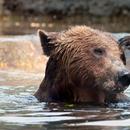Oct 02 2020 47 mins 2.6k
New Study Shows No Second Chance For Antarctic Ice Shelves From the heat waves and wildfires in the western U.S. to the active hurricane season in the Gulf, the climate crisis is intensifying. Sea ice is melting in the Arctic, and the ice sheets covering Antarctica are shrinking. Now, researchers have released the results of a study using satellite data, radar readings, and a massive computer simulation looking at the effects of gravity on ice in Antarctica. Their projections aren’t hopeful. Once Antarctic glaciers melt, the scientists found, they don’t re-freeze the same way, even if temperatures drop again. That spells bad news for sea level rise. Even if the world manages to hold to the 2 degrees Celsius rise targeted in the Paris climate agreements, the study predicts enough ice will likely to melt to cause roughly five meters of sea level rise—leading to flooding in cities from New York to Shanghai to London to Calcutta. Anders Levermann, a professor of the dynamics of the climate system at the Potsdam Institute for Climate Impact Research in Germany joins Ira to talk about the team’s ice melt predictions, and the need for fundamental changes in society to forestall even more catastrophic climate results. Ask An Expert: Why Do We Itch? The pandemic has us feeling a lot of things: anxious, stressed, tired. But what about itchy? Have you ever had a hard time not scratching or rubbing your face in public? Or had an unreachable itch beneath a mask? This week on Science Friday, we ask an expert: why do we itch? And is there any relief to be found in understanding the neuroscience behind why we scratch? Ira asks these questions and more to Diana Bautista, professor of molecular and cellular biology at the University of California Berkeley. They were joined by a live Zoom audience, who were also itching to ask their own questions. Digging For Answers To Avians’ Ancestors One of the biggest questions in paleontology is figuring out how dinosaurs transitioned into the modern birds we see today—and all of the intermediate steps involved in that process. China is becoming one of the latest hotspots for unearthing fossils of these prehistoric birds and bird-like dinosaurs. Paleontologist Jiangmai O’Connor is featured in our second season of ‘Breakthrough: Portraits of Women in Science,’ a video series profiling scientists and how their lives and work intersect. Here, she discusses her work in China, where she’s spent ten years trying to uncover clues about the diversity of ancient birds by examining their bones and preserved soft tissues, like lungs and ovaries.
